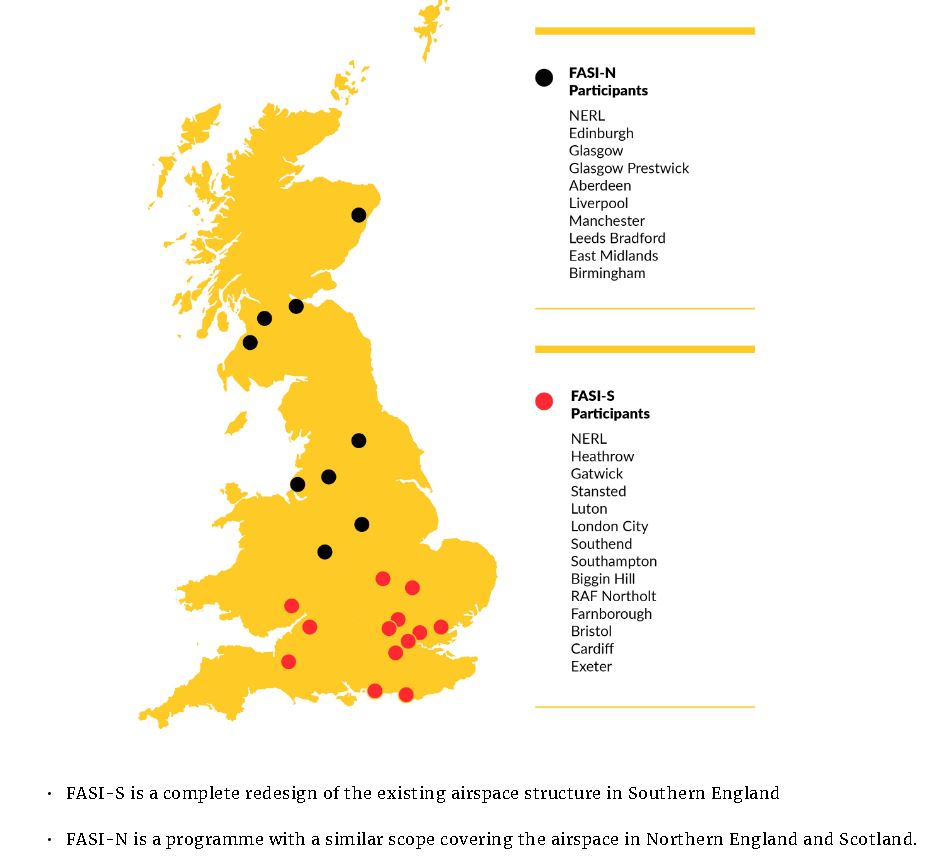Airspace Modernisation and Change
Whilst UK airspace is safe, the UK airspace structure is widely recognised as being inefficient.
The BGA;
- Recognises the need to protect the public who are travelling in commercial air transport aircraft
- Supports the need for commercial air transport and business aviation operations to be more efficient, including steeper climbs and descents, reducing fuel burn and reducing noise impacts
- Supports the need for carefully considered airspace modernisation that reasonably addresses the needs of gliding and other airspace users
- Notes the future growth of drone activity and the implications of integration with other airspace users
- Does not automatically oppose all airspace change proposals – each is carefully considered on its merits
To ensure that the needs of all airspace users are reasonably met and to restore balance, the BGA believes that the way lower airspace is designed and managed needs to change. A strategic approach needs to be adopted in partnership with all airspace users, with a more assertive and effective CAA overseeing compliance with newly developed modern airspace policies and standards that are fit for purpose. The report that followed the Lord Kirkhope inquiry into the UK’s lower airspace provides useful direction.
The BGA is working towards those aims with all other stakeholders including the Government and Regulators. For more detail see Consultations and Representation.
Airspace Modernisation
A Government directed Airspace Modernisation Strategy (AMS) aims to redevelop UK airspace over the next twenty years. You can read more from the CAA here.
NERL (part of NATS, a corporation that provides air navigation services including for all en-route upper airspace) has already started to establish modernised upper airspace above 7000′.
Lower airspace, ie below 7000′, is more of a problem. Unlike in most other countries, in the UK there are numerous Air Navigation Service Providers (ANSPs) who are all keen to meet the needs of their airport funders, many of who are in competition with each other. That results in significant challenges when trying to make the UK’s airspace more efficient. It is also difficult for GA to engage with and obtain a candid and joined up view of airport and ANSP needs. The AMS attempts to address lower airspace user needs.
Two of the AMS projects that are underway are FASI-S and FASI-N. These huge airspace infrastructure projects involve multiple airports submitting multiple airspace changes, including to link up with the upper airspace currently being redesigned by NERL. These airports are being encouraged to work together to develop integrated airspace designs. The resulting ACPs will result in the need for a significant response effort by GA organisations. The FASI-N and FASI-S projects are being co-ordinated within a masterplan by the Airspace Change Organising Group (ACOG). It is possible that other elements of the AMS will also be influenced by ACOG as they impact on the FASI projects, particularly in lower airspace.
Airspace change
The BGA is involved with most ACPs that impact on gliding. Where possible, we respond alongside or as a part of a GA Alliance response.
Club airspace officers are encouraged to get involved with tracking potential airspace issues that may result in ACPs.
Airspace change proposals under CAP725 can be viewed here.
Airspace change proposals under CAP1616 can be viewed here.
The CAA airspace department can be contacted here.
What is Performance Based Navigation?
Performance-based navigation is a concept developed by ICAO that moves aviation away from the traditional use of aircraft navigating by ground-based beacons to a system more reliant on airborne technologies, utilising area navigation and global navigation satellite systems. Its use enhances navigational accuracy. For more information, see Annex B of the Air Navigation Guidance 2017.
